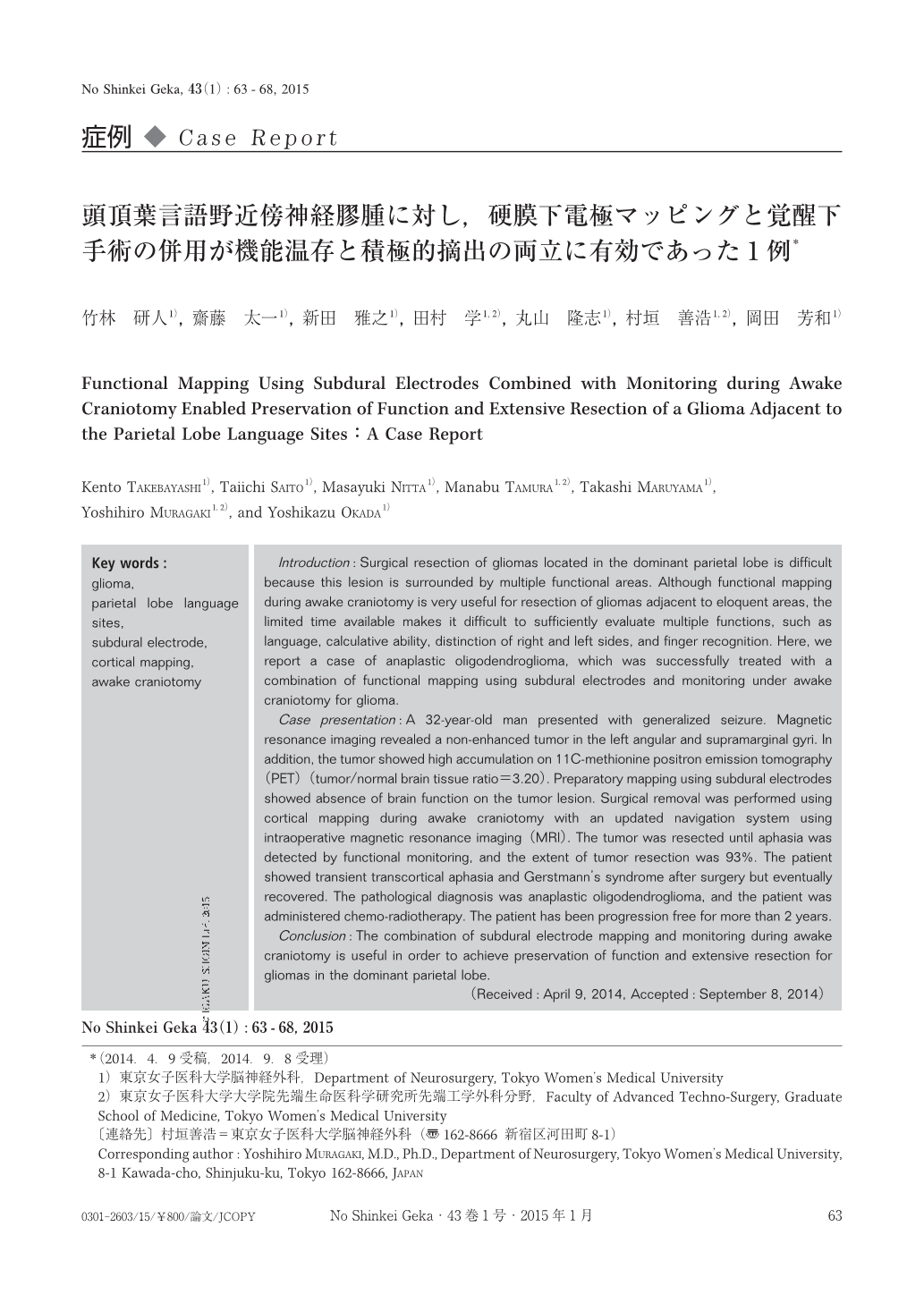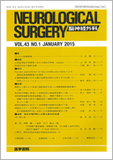Japanese
English
- 有料閲覧
- Abstract 文献概要
- 1ページ目 Look Inside
- 参考文献 Reference
Ⅰ.はじめに
優位半球頭頂葉は高次脳機能の機能野であると同時に縁上回を含めて頭頂葉言語野8)としても知られている.また側頭葉言語野にも接しているため,一般に優位半球頭頂葉の神経膠腫は積極的摘出が困難とされている.覚醒下開頭による機能マッピングはeloquent areaの神経膠腫の摘出術に有用であるが,優位半球頭頂葉の場合は,言語,計算,左右と手指認識など多種類の機能マッピングを行うには時間的制限のため十分な評価は困難である.一方,てんかん外科で用いられる硬膜下電極留置による機能マッピングは,十分な時間を確保できるためこの欠点を補うが,深部白質の機能情報を得ることができないため摘出範囲の決定には不十分である.
今回,優位半球下部頭頂葉の神経膠腫に対して,慢性硬膜下電極による詳細な脳機能マッピングを行った後に覚醒下開頭による腫瘍摘出術を施行し,機能温存と積極的摘出の両立をした症例を経験したので報告する.
Introduction:Surgical resection of gliomas located in the dominant parietal lobe is difficult because this lesion is surrounded by multiple functional areas. Although functional mapping during awake craniotomy is very useful for resection of gliomas adjacent to eloquent areas, the limited time available makes it difficult to sufficiently evaluate multiple functions, such as language, calculative ability, distinction of right and left sides, and finger recognition. Here, we report a case of anaplastic oligodendroglioma, which was successfully treated with a combination of functional mapping using subdural electrodes and monitoring under awake craniotomy for glioma.
Case presentation:A 32-year-old man presented with generalized seizure. Magnetic resonance imaging revealed a non-enhanced tumor in the left angular and supramarginal gyri. In addition, the tumor showed high accumulation on 11C-methionine positron emission tomography(PET)(tumor/normal brain tissue ratio=3.20). Preparatory mapping using subdural electrodes showed absence of brain function on the tumor lesion. Surgical removal was performed using cortical mapping during awake craniotomy with an updated navigation system using intraoperative magnetic resonance imaging(MRI). The tumor was resected until aphasia was detected by functional monitoring, and the extent of tumor resection was 93%. The patient showed transient transcortical aphasia and Gerstmann's syndrome after surgery but eventually recovered. The pathological diagnosis was anaplastic oligodendroglioma, and the patient was administered chemo-radiotherapy. The patient has been progression free for more than 2 years.
Conclusion:The combination of subdural electrode mapping and monitoring during awake craniotomy is useful in order to achieve preservation of function and extensive resection for gliomas in the dominant parietal lobe.

Copyright © 2015, Igaku-Shoin Ltd. All rights reserved.


